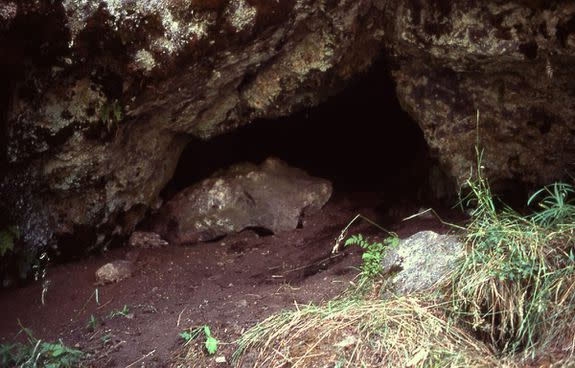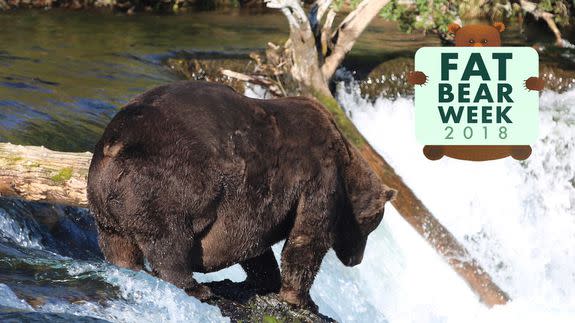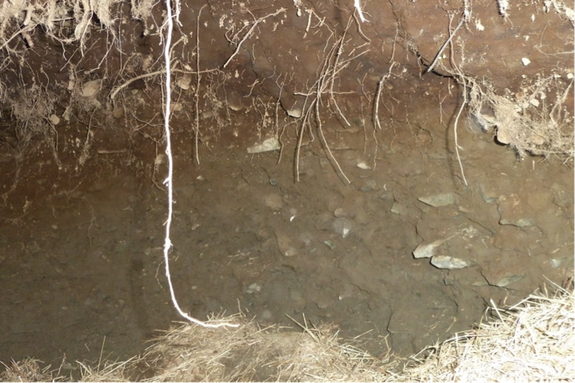Bear hibernation is a superpower, but it comes with a cost

Welcome to Fat Bear Week at Mashable! Each fall, Katmai National Park holds a competition as Alaska’s brown bears finish fattening up for their long winter hibernation. This year, Mashable is getting in on the salmon-munching action. Check back with us all week as we follow the fat bear face-offs each day, and remember to get your votes in for each round. Happy fishing!
Some bears hibernate in hollowed out tree-trunks. Some take a months-long rest beneath thick brambles and brush. Others dig into the hills to forge snug dens. And still others discover caves to hide away from the biting winter chill.
But wherever a bear chooses to hibernate, the objective is the same. It's a keen adaptation to avoid the long, ruthless winter famine.
Hibernating animals — including ground squirrels, groundhogs, and bats — slow their breaths, reduce their heartbeats, and substantially wind down, or depress, their metabolisms. Such dramatic changes can be taxing on their bodies, but the alternative, amid a starving winter, is almost certain death. So, come fall, the animals go into a controlled, coma-like state.
Often, it's involuntary.
"I always call this the magical time of year," Hannah Carey, who researches the physiology of hibernating animals at the University of Wisconsin-Madison's School of Veterinary Medicine, said in an interview.

Image: national Park Service
When fall arrives, some animals, like the ground squirrels Carey studies, suddenly depress their metabolisms, which is a process called torpor. They do this even when they're well-insulated from the cold inside cozy, room-temperature conditions. Something just triggers it.
"It's one of the magical properties of hibernation in some species," she said. "These are species whose physiology, presumably on some genetic clock, is telling them to go into that torpid state."
Bears — like those still fattening up in Katmai National Park — are often given more overt clues. Their world changes. The fish rot. The berries disappear. The forests brown.
SEE ALSO: An appreciation of Holly, the fat bear mom who adopted and raised an abandoned cub
Even though the scientific community was once largely on the fence about whether bears are true hibernators — because they can't dramatically drop their core temperature to freezing or below freezing temperatures — their torpid state was always considered an extraordinary feat, especially for so large an animal.
In order to make it happen, they must pack on excessive amounts of fat, especially for the long, dark subarctic winter inside Katmai National Park.
Nowadays, however, many scientists do consider bears true hibernators.
"For the longest time, I would say they’re not real hibernators," Frank van Breukelen, who researches hibernation and biochemical adaptation at the University of Nevada-Las Vegas, said in an interview. "Now, we’re so much more aware of what happens, and that we have a lot of different types of hibernations. Now, I’d tell you that bears really do hibernate."

Image: m. fitz/nps
"It’s still a little controversial," Marcella Kelly, a Virginia Tech ecologist who performs research at the university's Black Bear Research Center, said in an interview.
"It doesn’t really matter to me," Kelly added. "What they do is pretty amazing. They don’t eat and drink for months. And the females give birth and lactate during all of that."
Deep inside their dens, or wherever they choose to hibernate, bears sustain physiological extremes that would kill any human.
In black bears, Kelly regularly observes November hibernation heart rates of 50 beats per minute. But by January these rates plummet to less than half that. Some have even fallen to around 10 beats per minute.
"That's really low," she noted.
What's more, in November, these black bears take around 50 respirations a minute. By deep winter, this drops down precipitously, to as low as four or five breaths per minute.
And through it all, the bears gradually awake with their bodies well intact.
"If a human was bedridden like that, we'd lose a lot of muscle and bone," said Kelly.
Over the course of the summer, bear 812 went from bony to butterball. During winter hibernation, a bear can lose up to one third of its body mass. #FatBearWeek pic.twitter.com/BAJfwgX9CI
— Katmai National Park (@KatmaiNPS) October 4, 2018
Even before they fall into their deeply woozy state, the bears are already accomplishing biologically confounding feats. Specifically, they get profoundly fat — at levels that would cause irreparable damage in humans.
"Humans could not go essentially diabetic like that — getting so fat that they have Type 2 diabetes," said Kelly. "That’s one thing I think is amazing."
There's little question bears lower their metabolism in extreme ways. But what's being intensely studied today is how exactly they do it on the cellular level.
"We’re in the middle of studying that," said Kelly. "We're figuring out how they’re doing this."
A long, damaging sleep
For many animals, hibernation may be a necessary survival strategy. But it's not by any means easy on the creatures, no matter how resilient they are.
"Hibernation is really tough on animals," said van Breukelen. "I don’t think it's as cute of an adaptation as people thought it was."
In some populations of ground squirrels, between 20 to 50 percent of adults have been observed dying over the winter, van Breukelen noted. The number can be higher in younger, juvenile critters, he said.
Though bears and ground squirrels evolved to hibernate — and many are successful hibernators — moving in and out of hibernation or torpor can be stressful events, especially in the case of ground squirrels. Carey characterized the squirrels rapid wakeups as "explosive events."
"It's not all peaches and cream — even for those animals that are well-adapted," she said.

Image: nps
Scientists have identified biological stress markers inside hibernators' bodies, like out of whack cellular functions and protein abnormalities, said van Breukelen.
"There's a lot of damage that incurs during hibernation," he said, noting that it then takes an animal considerable energy to restore a body's imbalances.
Even so, bears are resilient, and apparently equipped to deal with these challenges. It's a remarkable survival technique, and in many ways is simply superhuman. Our bodies wouldn't stand a chance.
"For our organs and tissues? Just forget it," said Carey.
WATCH: A paralyzed man walks, with assistance, thanks to a new therapy that reactivates the spinal cord


